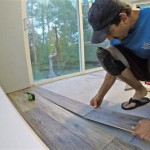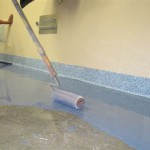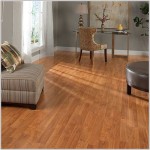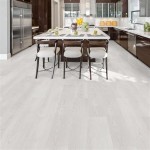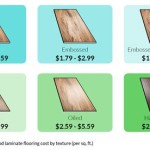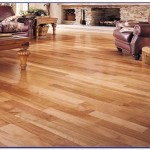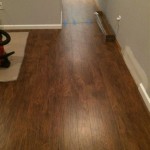Laminate Hardwood Flooring Water Damage: A Comprehensive Guide
Laminate hardwood flooring is a popular choice for its durability and realistic wood-like appearance. However, it is not immune to water damage, and it is important to understand the potential risks and how to handle such situations.
Understanding Laminate Flooring
Laminate flooring is a multi-layered material consisting of a base layer, a core layer made of high-density fiberboard (HDF), a decorative layer, and a wear layer. The core layer is the most vulnerable to water damage as it can absorb moisture and swell.
Types of Water Damage
Water damage to laminate flooring can occur due to various reasons, such as flooding, leaks, or spills. The severity of the damage depends on the type and duration of exposure to water:
- Surface damage: Water on the surface can cause the wear layer to swell and buckle.
- Core damage: Water seeping into the HDF core can cause it to swell, leading to cracks and warping.
- Subfloor damage: In severe cases, water can damage the subfloor beneath the laminate flooring.
Consequences of Water Damage
Water-damaged laminate flooring can have several negative consequences, including:
- Buckling: Swollen planks can buckle and lift from the subfloor, creating an uneven surface.
- Warping: The core layer can warp and become distorted, affecting the stability of the flooring.
- Discoloration: Water can stain the decorative layer, leaving unsightly marks.
- Mold and mildew growth: Moisture provides an ideal environment for mold and mildew to thrive, posing health risks.
Preventing Water Damage
Taking proper precautions can help prevent water damage to laminate flooring:
- Seal joints: Use a silicone sealant to prevent water from seeping into the joints between planks.
- Avoid moisture-prone areas: Install laminate flooring away from areas with high humidity, such as bathrooms and laundry rooms.
- Wipe up spills immediately: Any liquid spills should be promptly cleaned up to prevent absorption into the flooring.
- Use a moisture barrier: Install a plastic or foam moisture barrier beneath the laminate flooring to prevent water from the subfloor from reaching the planks.
Responding to Water Damage
In case of water damage, act quickly to minimize the extent of the damage:
- Remove the source of water: Turn off the water supply or remove any standing water.
- Absorb excess water: Use towels or a wet/dry vacuum to remove as much water as possible from the surface.
- Ventilate the area: Open windows and doors to allow air to circulate and prevent moisture build-up.
- Inspect the flooring: Assess the severity of the damage and contact a professional flooring contractor if necessary.
Conclusion
Laminate hardwood flooring is a durable choice, but it is not immune to water damage. Understanding the potential risks and knowing how to respond to water exposure can help you maintain the longevity and appearance of your flooring. By taking preventive measures and acting promptly in the event of water damage, you can mitigate its consequences and ensure a lasting, beautiful floor.

How To Prevent Repair Water Damage Laminate Flooring Claude Browns

How Do I Camouflage Water Damaged Laminate Flooring Hometalk

A Guide To Fix Wet Laminate Floors All Dry Usa

6 Signs Of Hardwood Floor Water Damage United Restoration Long Island

How To Find A Leak Under The Floor And Fix Problem Esb Flooring

Assessing And Addressing Water Damage Hardwood Floors

How To Deal With Water Damage Wood Floors

Why Am I Being Told That My Waterproof Laminate Flooring Needs To Be Pulled Up After Water Damage Restopros Of Northeast Georgia

How To Tell If Your Laminate Floor Has Water Damage San Mateo Ca

How To Repair Laminate Flooring With Water Damage 12 Steps
Related Posts

